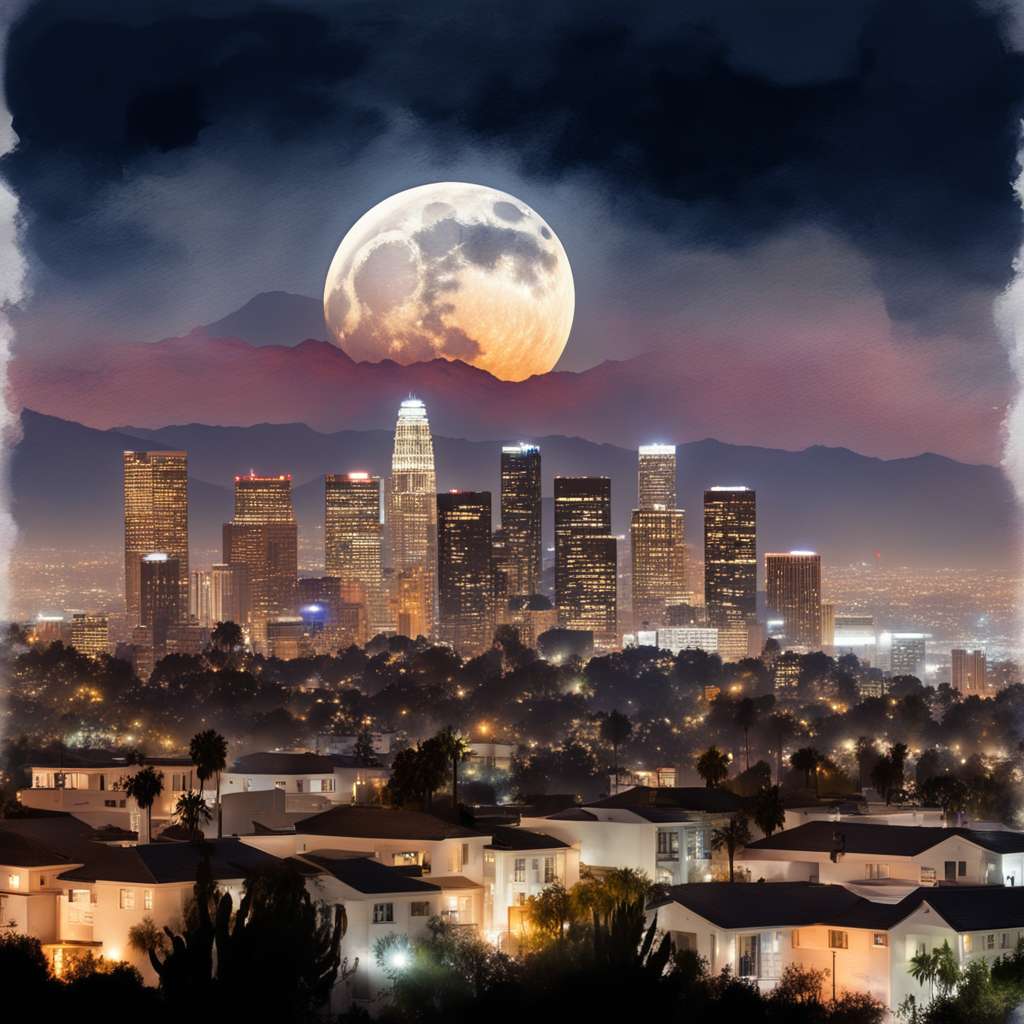
Witness the final supermoon of 2024 this weekend in Los Angeles
- The Beaver Moon, last supermoon of 2024, peaks at 4:29 p.m. ET on November 15, appearing larger and brighter due to proximity at 361,867 kilometers from Earth.
- The Leonid meteor shower peaks on November 16-17, showcasing up to 10 or more meteors per hour, despite the full moon's brightness.
- On November 16, the full moon aligns just 0°6' from the Pleiades star cluster, offering a stunning visual despite potential obscuration by the supermoon.
The night sky over Los Angeles, California, is set to host a remarkable celestial event this weekend, as the Beaver Moon, the last supermoon of the year, graces the heavens. This astronomical phenomenon, which will reach its peak brightness at 4:29 p.m. Eastern Time on Friday, November 15, 2024, is a significant event for stargazers and astronomy enthusiasts alike. The Beaver Moon, named after the time when beavers prepare for winter, is the fourth and final supermoon of 2024, following a series of consecutive supermoons that began in August.
A supermoon takes place when a full moon aligns with the point in its elliptical path that is nearest to Earth, called perigee. This results in the moon appearing larger and brighter than usual. According to NASA, the Beaver Moon will be approximately 361,867 kilometers (225,000 miles) away from Earth, making it a spectacular sight for those fortunate enough to witness it. The term “supermoon” was coined by astrologer Richard Nolle in 1979 and has since become a popular term in both scientific and public discourse.

The Leonid Meteor Shower: A Celestial Bonus
In addition to the supermoon, the Leonid meteor shower will also be at its peak this weekend, providing a dazzling display of shooting stars. The Leonids, known for their fast-moving meteors traveling at speeds of up to 70 kilometers per second (44 miles per second), originate from the debris of the Tempel-Tuttle comet. This meteor shower is renowned for its bright meteors, which can appear in various colors, adding to the spectacle of the night sky.
The Leonids are expected to peak on the nights of November 16-17, with up to 10 or more meteors visible per hour. While the full moon’s brightness may make it challenging to see some of the fainter meteors, the most brilliant ones should still be visible. The Leonid meteor shower is a recurring event, with Earth passing through the comet’s debris trail every 33 years, occasionally resulting in a meteor storm with hundreds or even thousands of meteors per hour.
- Absolutely magical night awaits Los Angeles! 🌕✨......
- Too bright, can't see the meteors clearly 😕......
- Imagine ancient cultures interpreting these celestial events......
The Pleiades Star Cluster: A Stellar Companion
Adding to the celestial display, the Pleiades star cluster, also known as the “Seven Sisters” or Messier 45, will be visible in the night sky. This open star cluster, located in the Taurus constellation, consists of more than 1,000 stars and is one of the most recognizable patterns in the sky. The Pleiades are approximately 410 light-years from Earth and have been a subject of fascination in various cultures throughout history.
On Saturday, November 16, at 1:59 a.m. Eastern Time, the full moon will be just 0°6′ away from the Pleiades, creating a stunning visual alignment. However, the brightness of the supermoon may obscure some of the stars in the cluster, making it a challenge for observers to see the full extent of this stellar group. Despite this, the Pleiades remain a captivating sight and a reminder of the vastness and beauty of the universe.
Our Advice on the City
For those in Los Angeles, the best time to view the supermoon and accompanying celestial events is just after sunset. The moon will rise at approximately 5:53 p.m., providing ample opportunity to witness this extraordinary event. While no special equipment is needed to see the supermoon, a pair of binoculars or a telescope can enhance the viewing experience, allowing observers to see details on the lunar surface, such as the prominent Tycho crater.
In conclusion, the Beaver Moon and its celestial companions offer a unique opportunity to connect with the cosmos and appreciate the wonders of the universe. For occasional travelers, this event serves as a reminder to look up and explore the night sky, whether at home or while traveling. For seasoned travelers, consider planning trips around celestial events, as they can provide unforgettable experiences and a deeper appreciation for the natural world. As you gaze at the supermoon, take a moment to reflect on the interconnectedness of all things and the beauty that lies beyond our everyday lives.
Trending now







